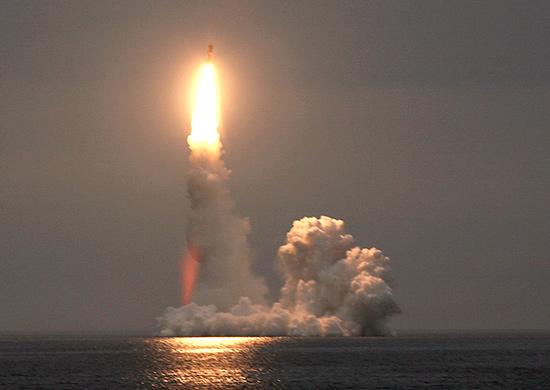The ballistic nuclear-powered missile submarine Yuri Dolgoruky has launched two intercontinental ballistic missiles Bulava from the White Sea. This is what the Russian Ministry of Defense communicates.
The class submarine Borei he left Severodvinsk on Sunday morning. The head of the first missile hit the target, located in the Kura range on the Kamchatka Peninsula. The second missile performed a flight test. The two missiles were launched under water.
The last multiple launch of two Bulava intercontinental ballistic missiles goes back to the last 14 November. At that juncture it was the nuclear-powered submarine that launched Vladimir Monomakh.
The Bulava three-stage missile, code-named Nato SS-N-30 Mace, is the naval version of the most advanced Russian ballistic missile, the SS-27 Topol-M. It can also be launched in motion. Carries up to 10 headers MIRV, can hit targets up to 8000 kilometers away and is designed to exclusively equip class nuclear submarines Borei. Each Bulava (12,1 meters long, 2,1 meter diameter and 36,8 heavy tons) is armed with 6-10 thermonuclear warheads for 96-196 submarine tested. The possible coverage of sensitive targets, considering the range of 8000 kilometers, could be the Barents Sea and the Sea of Okhotsk. If the Russians launched from these areas, they could hit any point in the continental United States.
I Borei they will carry out strategic patrols along the southern latitudes to cover possible objectives. The fourth-generation class submarines Borei they will form the backbone of the strategic nuclear deterrent of the Russian Navy. They will replace the Typhoon, Delta-3 and Delta-4 class submarines.
Within the 2020, the Russian Navy plans to operate on a total of eight class ballistic submarines Borei: three 955 and five 955-A (Borei-II). Each Borei should carry from sixteen to twenty Bulava missiles (only for 955A), each of which has from six to ten Mirv warheads. The Russians are optimistic about the Bulava missiles and the Borei class submarines, which are responsible for nuclear deterrence at least until the 2050 (after the abandonment of the studies on the R-39UTTH Bark missile).
(photo: Navy)












